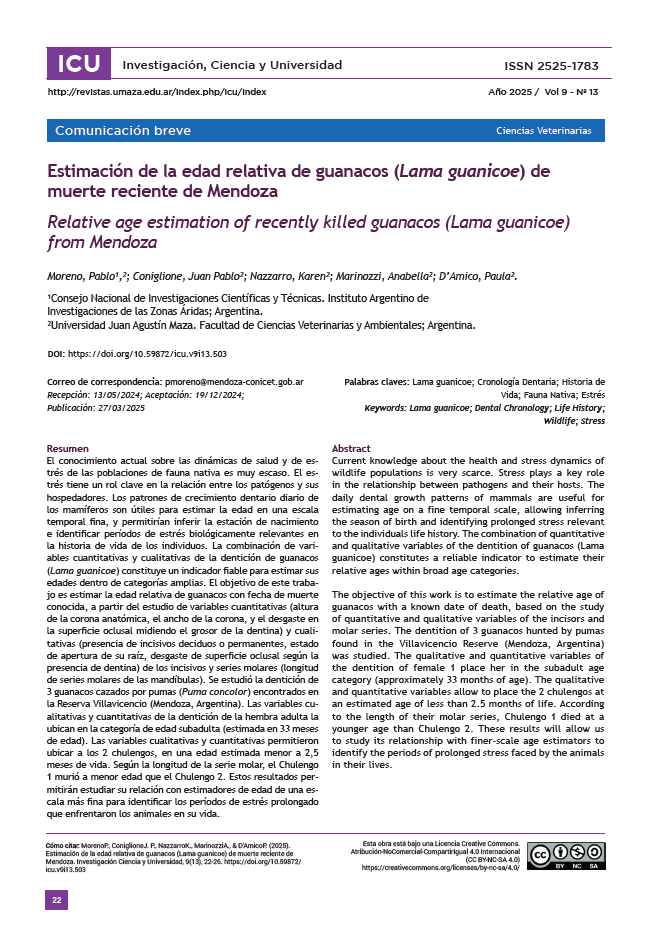Relative age estimation of recently killed guanacos (Lama guanicoe) from Mendoza
Relative age estimation of recently killed guanacos (Lama guanicoe) from Mendoza
DOI:
https://doi.org/10.59872/icu.v9i13.503Keywords:
Lama guanicoe, Dental Chronology, Life History, Wildlife, StressAbstract
Current knowledge about the health and stress dynamics of wildlife populations is very scarce. Stress plays a key role in the relationship between pathogens and their hosts. The daily dental growth patterns of mammals are useful for estimating age on a fine temporal scale, allowing inferring the season of birth and identifying prolonged stress relevant to the life history of the species. The combination of quantitative and qualitative variables of the dentition of guanacos (Lama guanicoe) constitutes a reliable indicator to estimate their relative ages within broad age categories.
The objective of this work is to estimate the relative age of guanacos with a known date of death, based on the study of quantitative and qualitative variables of the incisors and molar series. The dentition of 3 guanacos hunted by pumas found in the Villavicencio Reserve (Mendoza, Argentina) was studied. The qualitative and quantitative variables of the dentition of female 1 place her in the subadult age category (approximately 33 months of age). The qualitative and quantitative variables place the 2 chulengos at an estimated age of less than 2.5 months of life. According to the length of their molar series, Chulengo 1 died at a younger age than Chulengo 2. These results will allow us to study its relationship with finer-scale age estimators to identify the periods of prolonged stress faced by the animals in their lives.
Downloads

Published
How to Cite
Issue
Section
Categories
License
Copyright (c) 2025 Pablo Moreno, Juan Pablo Coniglione, Karen Nazzarro, Anabella Marinozzi, Paula D’Amico

This work is licensed under a Creative Commons Attribution-NonCommercial-ShareAlike 4.0 International License.




















